This Michelin-starred chef's easy meatball recipe is perfect for cozy dinners
Rachel Askinasi

- Mario Carbone, the chef and founder of Carbone, got his meatball recipe from his mom.
- At his Michelin-starred restaurant, the chef uses an adapted version of the dish he grew up eating.
Mario Carbone, the founder of his namesake restaurant, shared his meatball recipe with Insider.

The Michelin-starred chef's original Italian eatery — aptly named Carbone — sits on Thompson St. in Manhattan's West Village neighborhood. Known for its spicy rigatoni and veal Parmesan dishes, this place has become a hotbed for celebrity sightings.
It's notoriously difficult to get a reservation (I've been trying for a couple of months now).
While the chef has become known for his meatballs, he told Insider that the recipe was adapted from his mother's.
"You would be hard-pressed to find an Italian chef who doesn't find their mother to be a source of inspiration," Carbone said. "I am no different."
He shared his recipe with Insider so we can make it at home and enjoy a piece of Carbone while we wait for that Resy notification.
With a trio of ground meats and a simple allium combination, this recipe has a total of 11 ingredients.
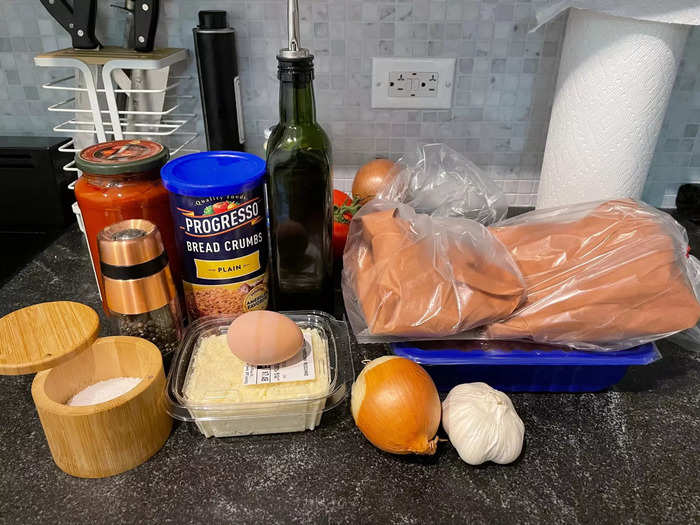
In terms of ingredients, this recipe is super simple. Carbone uses three types of meat, while he said his mother made them with just beef.
Before you start, you'll need the following (these measurements make 24 meatballs):
- 2 pounds ground beef
- 1 pound ground pork
- 1 pound ground veal
- 40 grams olive oil
- 260 grams onion (diced small)
- 40 grams garlic
- 1 egg
- 145 grams Progresso breadcrumbs
- 1/2 quart of milk
- 20 grams salt
- 75 grams grated parmesan
The first step is to sweat the chopped onion and garlic in a pan.
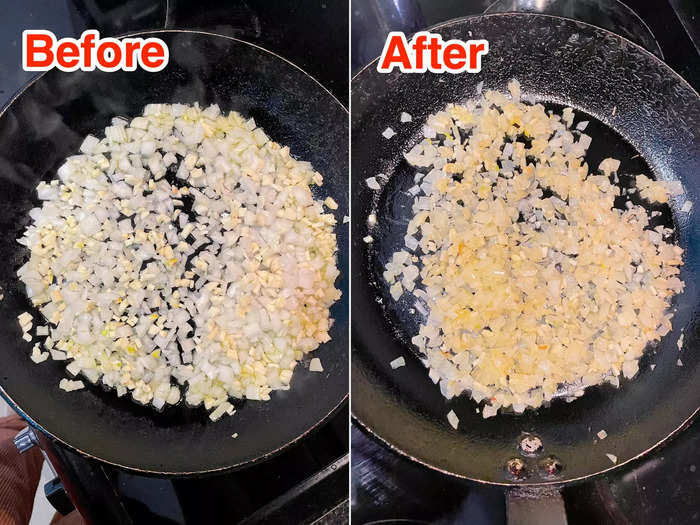
After chopping the alliums, I threw them in a pan with olive oil on medium-low heat. Using a wooden spoon, I tossed them around a few times so that they didn't burn. I've found resisting the urge to stir too much will work in your favor as it will allow the onions to soften, become translucent, and get sweeter in flavor (that's what's known as the sweating process).
Next, it's time to mix everything together.
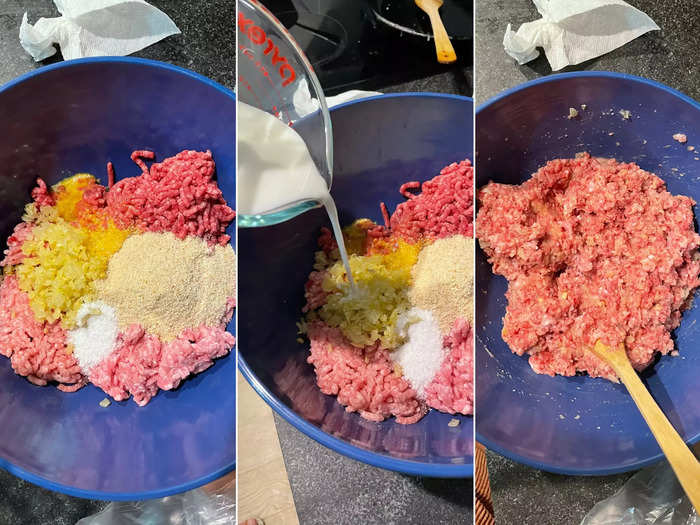
With the ground meats, onion and garlic mixture, breadcrumbs, milk, salt, and eggs all in a large mixing bowl, I got to work.
Carbone didn't leave specific instructions for how to combine this mixture. Typically, when I make meatballs using my own family recipe, I go in there with my hands and fold everything in on each other. But I had to have one hand free for photo-taking this time, so I used a wooden spoon and gently mixed until everything looked evenly distributed.
Then it was time to get my hands dirty and form the balls.
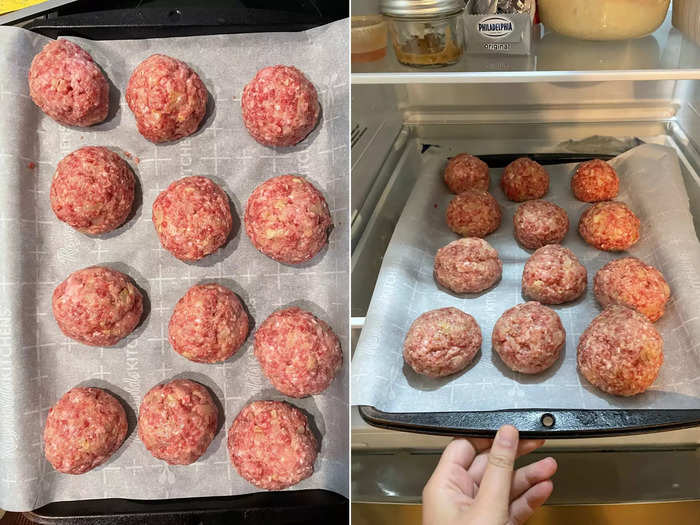
Carbone's instructions say to "weigh and roll the meatballs to 3 1/2-ounce individual portions."
I don't have a food scale at home, but I knew I had an unopened travel-size shampoo that weighed 3 ounces. So I held that for a bit to get a feel for what 3 ounces felt like in my hand, and then made the meatballs just a bit heavier for that extra 1/2 ounce. It wasn't the most precise system, but it's what I had and I think it worked!
The chef didn't say to wet your hands at all before forming the little spheres, but once my hands started sticking to the mixture, I gently wet them with room temperature water before continuing. This created a barrier between the meat and my skin, which stopped the sticking and made the meat easier to handle. I'd recommend doing that from the start.
Once I had all my meatballs on a tray lined with parchment paper, I slid the tray into my refrigerator to chill for an hour as per the instructions.
I started to preheat my oven to 325 degrees while the meat chilled.
The chef's next step is to lightly fry the meatballs in a shallow pan of olive oil until they're golden brown on the outside.

I chose to use the same pan, unwashed, that I cooked the onions and garlic in so that some of the leftover flavors would transfer into the meat. Carbone didn't say to use a new pan, so I figured this was still staying within the bounds of the recipe.
I cooked the meatballs off in batches of three until they were all browned — some got a little more cooked than others.
Finally, it was time to finish them in the oven.
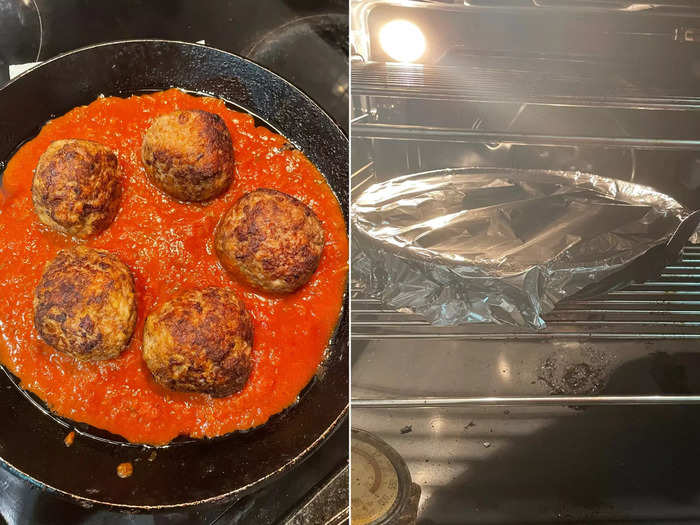
Carbone says to pick your favorite tomato sauce to use for this dish. I know the chef's namesake brand sells sauce, but I've never tried it before. I wanted to keep things consistent so I would know which flavors were from the sauce and which were from the meatballs, so I went with my current No. 1 pick for jarred sauce: Rao's.
In the same shallow pan I had been using, I poured enough sauce to cover the bottom around 1/2-inch deep and nestled five meatballs in a circle. Then I covered it with foil, per Carbone's instructions, and slid the pan into my oven for 3o minutes.
They weren't quite done yet, so I stuck them back in for another 15 minutes, which did the trick.
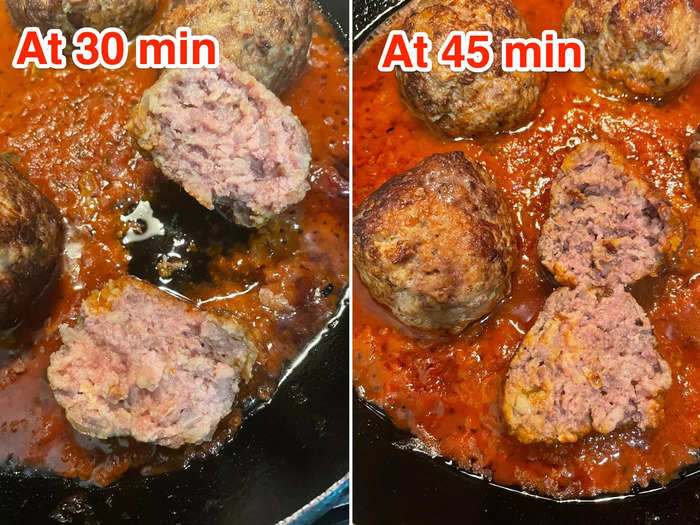
When I first heard the timer go off, I cut into one of the meatballs to see if it was cooked yet. It didn't seem like it was.
After another 15 minutes, which brought the total cook time to 45 minutes, they looked and felt cooked through. The meat was bouncy, not mushy, and they were hot in the center instead of warm.
I thought the meatballs had great texture but could have been a little more flavorful.
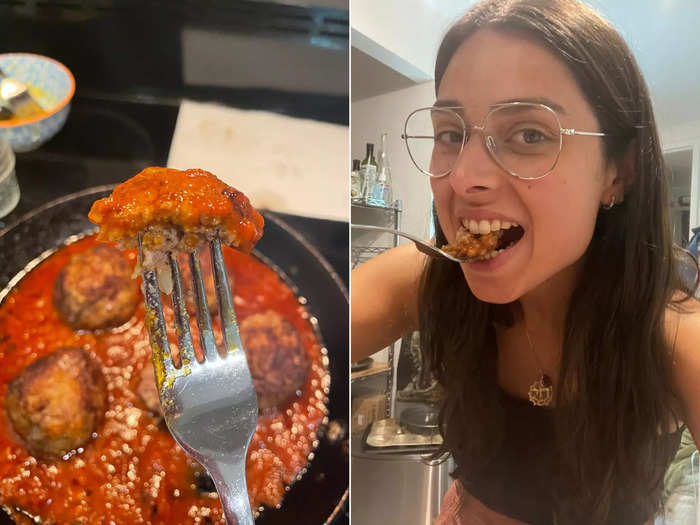
These meatballs were perfectly moist and fluffy. They didn't dry out in the oven, which is something I was afraid would happen.
Typically, I make smaller meatballs that are more flat than spherical, and I was worried these would be too dense for my taste. But they were surprisingly light and airy thanks to the egg and breadcrumb ratios, which I enjoyed.
In my opinion, the only thing these meatballs were lacking was robust flavor. I was able to taste the meat, but other than that, each tasting note I got was from the sauce.
That being said, I think the lack of robust flavor can make for a great opportunity to get creative and build on this recipe.
This recipe is a great base for making it your own.
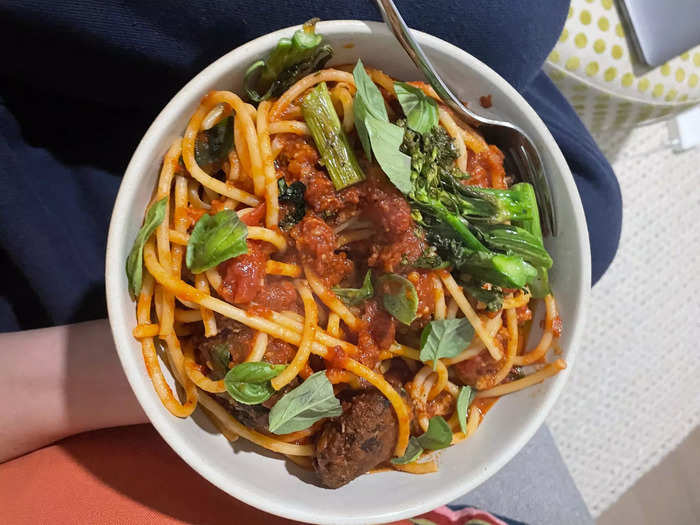
As someone who typically will look at a recipe for guidance and then riff on my own, I think this recipe is perfect for that.
Next time I make this for a cozy Italian night, I'll probably add the grated cheese into the meatball mixture rather than using it as a dish topper only. I'd also add oregano, parsley, and maybe even red pepper flakes to the mixture.
Another thought that went through my head was turning these into more of a Middle Eastern kofta, leaving out the cheese, adding fresh parsley, and mixing in spices like cumin, coriander, cinnamon, cloves, and black pepper. Even though kofta is typically made with beef, lamb, or chicken, changing up the additional seasonings would allow me to eat these meatballs in a totally different way — rather than pasta and sauce, I'd serve them with hummus, tabbouleh, beets, and probably some pita.
Overall, I enjoyed the meatballs when I broke them up and cooked them submerged in the sauce to soak in the extra flavor. And whether you add spices or make it as-is, these can be eaten on their own in sauce or with pasta for a comforting, crowd-pleasing meal.
READ MORE ARTICLES ON
Popular Right Now
Popular Keywords
Advertisement